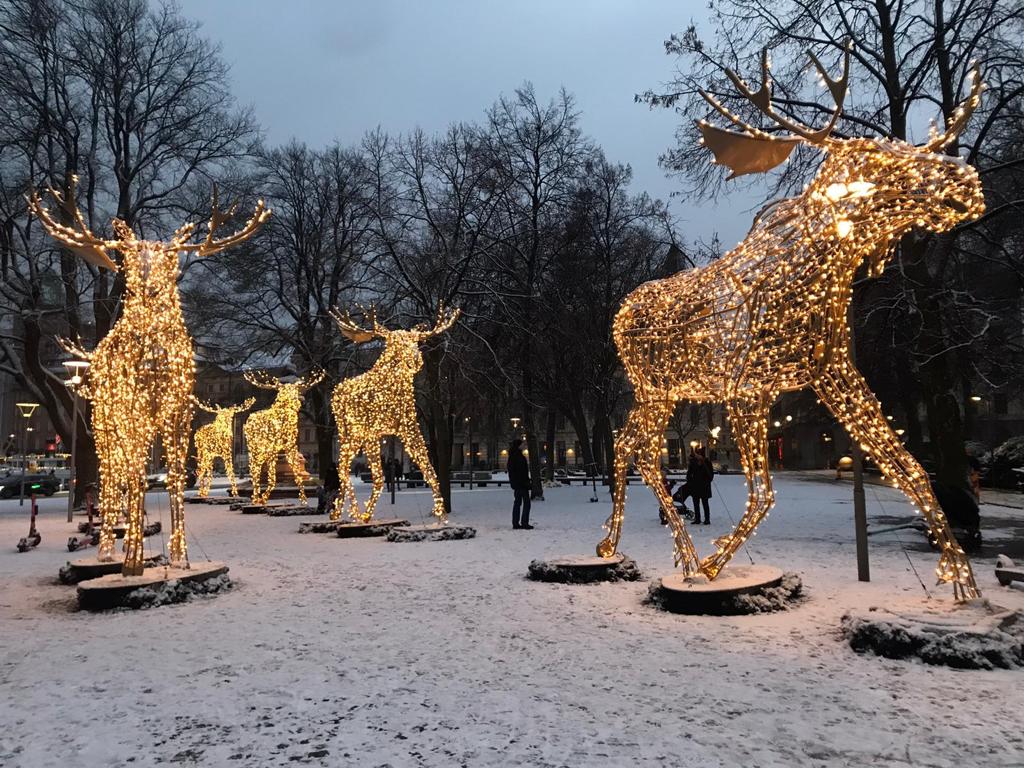
St. Lucia’s day: History
December in Stockholm is very dark. With the sun rising around 8:30 am and going down around only 2:50 pm, we get less than 7 hours of light per day. Nowadays, the city makes an amazing job of illuminating the streets and creating a very festive environment.

However, back in the day, this was very different. The shortest day of the year (around December 13th on the Julian Calendar) was thought to be particularly dangerous as all the darkness allowed evil creatures to come out and create chaos.
Therefore, it makes sense that people in Sweden and Scandinavia starting to celebrate light!
One Swedish festivity associated with light is Saint Lucia’s day on December 13th. This year’s big procession did not happen in Stockholm, and I only saw a couple of kids dressed in white gowns. I did eat lussebullar though, a delicious bun made with saffron and raisins that is baked for the holiday.

But as I was doing this, I was wondering, who was Saint Lucia?
Saint Lucia’ history
Lucia, whose name might come from the Latin word for light (Lux), was a Christian martyr. She was born from noble parents in Sicily around the year 283, in times where Christians were persecuted and had to hide. When her mother fell ill, Lucia prayed to Saint Agatha for her mom’s recovery. After this happened, her mother allowed her to give her dowry to the poor instead of getting married.
It is said that she would also bring food and supplies to the Christians hiding in catacombs. In order to bring and help as much as she could, she would put candles on a wreath around her head so that way she did not have to carry a torch. (This candle wreath is very popular seen during Saint Lucia’s day celebrations!)
However, the man she had been engaged to, accused her to the authorities. When she did not renounce her faith, they tried to kidnap her and kill her, but they could not until she was stabbed through the throat and had received the sacrament. A grim death…
So how did the St. Lucia’s day celebrations start?
St. Lucia’s day celebration
In Sweden, the celebration of Saint Lucia’s day was initially only a local Christmas tradition in the Vastergotland province that might have been started in 1764 (or at least, that’s the first recording of it). For many years, the oldest daughter in a family would bring coffee and lussekatter/lussebullar to the other members of her family. It became popular in more areas with the first celebration of Lucia at the Skansen museum occurred in 1893 and then a Stockholm newspaper decided to have public Lucia celebrations in 1927.
Nowadays, this day is celebrated with a candlelit procession where kids dress up as different characters (Lucia, maidens, star boys, gingerbread men or Christmas elves) and sing. Lucia is the one leading the others and she wears a wreath with candles on her head. Also, with food (of course) and glogg.
Pretty interesting, right?
*warning: As a biomedicine student, I must say I am not a history scholar and the accuracy of many details of Lucia and St. Lucia’s day history is still debated.
Alessandra - Biomedicine (MSc)
Hi everybody! My name is Alessandra, but I usually go by my nickname, Kyomi. My role in the digital ambassador team is being the new Biomedicine (MSc) blogger. I was born and raised in Peru, but I moved to the United States for my undergraduate studies. After graduation, I worked for 2 years in a neuroscience lab. Now, I have moved to Sweden to be a student at Karolinska Institutet!

0 comments